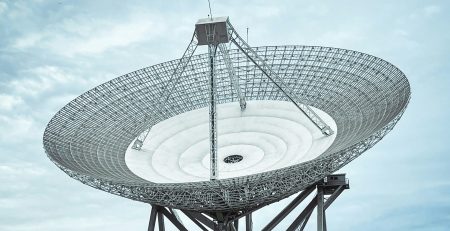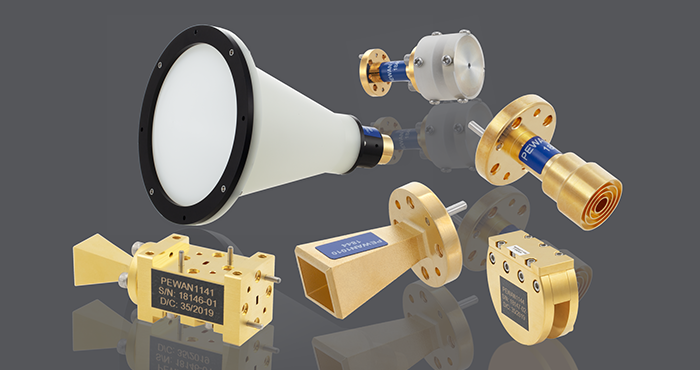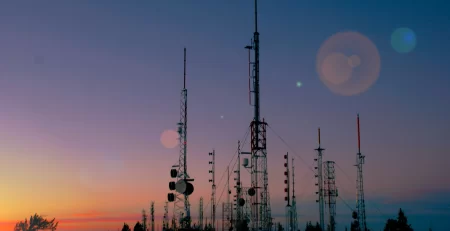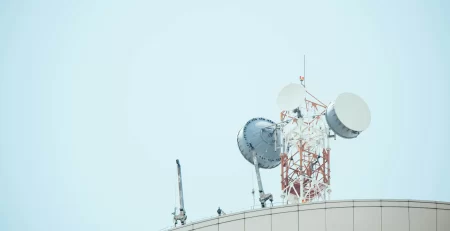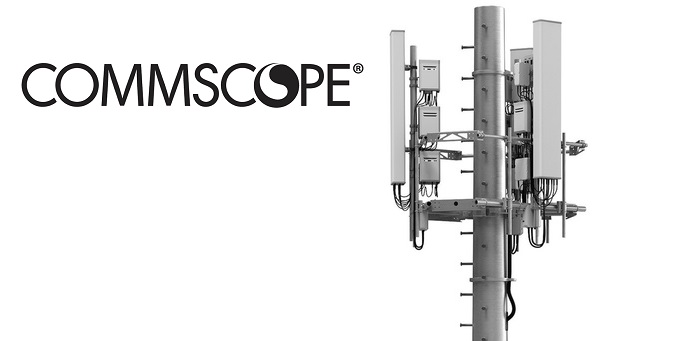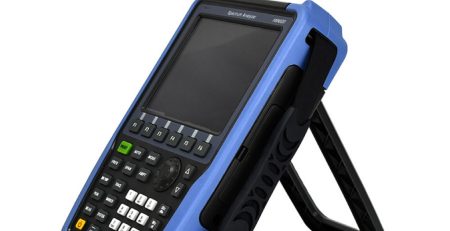Discover How Many Types of Radio Antennas Serve Different Purposes
How many types of radio antennas are there? Radio antennas play a crucial role in wireless communication systems, acting as the eyes and ears of devices. Understanding the diverse types of antennas is essential for optimizing performance. By exploring the classification based on wavelength and construction, users can make informed decisions about antenna selection. This blog will delve into the various types of radio antennas available, their unique characteristics, and how they are utilized across different applications.
How many types of radio antennas are there?
Overview of classification
Radio antennas come in various types, each serving a specific purpose in wireless communication systems. Understanding the classification based on wavelength and construction is essential for optimizing performance.
Based on wavelength
Long Wave Antennas: These antennas operate at low frequencies, typically below 300 kHz, making them suitable for long-distance communication.
Short Wave Antennas: Operating between 3 and 30 MHz, these antennas are versatile and can propagate signals over long distances via skywave propagation.
Microwave Antennas: Operating above 1 GHz, these antennas are ideal for high-speed data transmission due to their short wavelengths.
Based on construction
Dipole Antennas: Consisting of two conductive elements, dipole antennas are balanced and efficient radiators commonly used in FM radio and television broadcasting.
Monopole Antennas: With a single conductive element over a ground plane, monopole antennas are compact and widely used in portable devices like smartphones.
Loop Antennas: Loop antennas form a closed loop of wire or tubing and are known for their directionality, often used in direction-finding applications.
Yagi-Uda Antennas: Featuring multiple elements arranged in parallel, Yagi-Uda antennas offer high gain and directivity, making them suitable for TV reception.
Importance of classification
Understanding the classification of radio antennas is crucial as it enables users to select the most appropriate antenna for their specific needs. By knowing the characteristics and applications of each type, individuals can optimize their communication systems for better performance.
Types of Antennas
 Dipole Antennas
Dipole Antennas
Characteristics
Efficient Design: Dipole antennas are known for their efficiency and consistent performance in various communication systems.
Omni-directional Radiation Pattern: These antennas radiate signals uniformly in all directions, ensuring widespread coverage.
Reliable Polarization: With a reliable polarization mechanism, dipole antennas maintain signal integrity for clear communication.
Half-Wavelength Structure: Due to their half-wavelength design, dipole antennas are typically larger in size but offer optimal performance.
Uses
Cellular Communication: Dipole antennas are commonly used in cellular networks to facilitate seamless wireless communication.
Wi-Fi Applications: In Wi-Fi systems, dipole antennas play a crucial role in ensuring strong and stable wireless connections.
Amateur Radios: Considered one of the most common antenna systems for amateur radios, dipole antennas are affordable and easy to set up.
Monopole Antennas
Characteristics
Compact Design: Monopole antennas feature a single conductive element over a ground plane, making them compact and versatile for different applications.
Portable Use: Their compact size makes monopole antennas ideal for portable devices like smartphones and small communication gadgets.
Uses
Portable Devices: Monopole antennas are widely used in portable devices due to their compact design and efficient performance.
Wireless Communication: These antennas are essential components in wireless communication systems, providing reliable signal transmission.
Loop Antennas
Characteristics
Directionality: Loop antennas exhibit directional properties, allowing users to focus signals in specific directions for enhanced reception.
Closed Loop Structure: The closed loop design of loop antennas contributes to their unique characteristics and functionality.
Uses
Direction-Finding Applications: Loop antennas are commonly utilized in direction-finding applications where precise signal localization is required.
Radio Reception Enhancement: Due to their directional capabilities, loop antennas enhance radio reception quality by reducing interference from unwanted sources.
Yagi-Uda Antennas
Characteristics
Consisting of multiple elements aligned parallel to each other, Yagi-Uda antennas are renowned for their high gain and directivity.
The design includes a driven element, reflector, and one or more directors that work together to enhance signal strength in a specific direction.
With its directional focus, this antenna type efficiently transmits and receives signals with improved clarity and range.
Uses
Enhancing TV Reception: Yagi-Uda antennas are commonly used for television reception due to their ability to capture distant signals effectively.
Radio Astronomy: In the field of radio astronomy, these antennas play a vital role in observing celestial objects with precision and detail.
Long-Distance Communication: Yagi-Uda antennas are utilized in long-distance communication systems where signal strength and reach are essential factors.
By understanding the characteristics and applications of Yagi-Uda antennas, individuals can leverage their directional capabilities for improved signal reception and transmission across various communication platforms.
Applications of Antennas
In terms of installation, RFecho’s Radio Antennas are user-friendly. They come with all the necessary components and detailed instructions, making the installation process straightforward. This makes them a practical choice for both professionals and hobbyists.
RFecho’s Radio Antennas also prioritize durability. They are made from high-quality materials that can withstand harsh environmental conditions, ensuring long-lasting performance. This makes them a cost-effective choice as they are built to last.
In conclusion, RFecho’s Radio Antennas are a testament to the diversity and functionality of radio antennas. They offer superior performance, durability, and ease of installation, making them a top choice for anyone in need of reliable radio frequency solutions. Whether you’re a professional in the telecommunications industry or a radio enthusiast, RFecho’s Radio Antennas are sure to meet and exceed your expectations.
Communication
VHF and UHF
VHF and UHF antennas play a crucial role in enhancing communication across various platforms. VHF antennas, operating between 30 MHz and 300 MHz, are commonly utilized for FM radio broadcasting, television transmissions, and maritime communications. On the other hand, UHF antennas, ranging from 300 MHz to 3 GHz, are essential for applications like terrestrial television broadcasting, GPS systems, and cellular networks.
VHF Antennas:
FM Radio Broadcasting: VHF antennas are widely used in FM radio stations to transmit high-quality audio signals over long distances.
Television Transmissions: Television broadcasters rely on VHF antennas to deliver clear and reliable TV signals to viewers.
Maritime Communications: VHF antennas are crucial for maritime communication systems on ships and yachts due to their effective range and signal strength.
UHF Antennas:
Terrestrial Television Broadcasting: UHF antennas are fundamental for terrestrial TV broadcasting as they enable the transmission of digital TV signals.
GPS Systems: In GPS technology, UHF antennas aid in satellite communication for accurate positioning and navigation services.
Cellular Networks: UHF antennas play a vital role in cellular networks by facilitating seamless wireless communication between mobile devices.
Radar
Weather Forecasting
Radar antennas are indispensable tools in weather forecasting applications. By utilizing radar technology with specialized antennas, meteorologists can track precipitation patterns, monitor severe weather conditions, and predict atmospheric phenomena accurately. Weather radar systems equipped with high-gain directional antennas provide real-time data on storm movements, rainfall intensity, and wind speeds to help forecasters issue timely warnings to the public.
Precipitation Tracking: Radar antennas assist in tracking rain showers, snowfall rates, and hailstorms by detecting the reflectivity of precipitation particles.
Severe Weather Monitoring: With advanced radar systems featuring Doppler capabilities, meteorologists can monitor severe weather events such as tornadoes, thunderstorms, and hurricanes more effectively.
Atmospheric Phenomena Prediction: Radar technology combined with sophisticated antenna designs enables the prediction of atmospheric phenomena like lightning strikes or microburst events with improved accuracy.
Traffic Control
In urban areas and transportation hubs worldwide, radar antennas play a vital role in traffic control management. By deploying radar-based sensors integrated with intelligent antenna arrays along highways, intersections, and parking facilities, traffic authorities can monitor vehicle flow dynamics in real time. These radar systems provide valuable data on traffic density, speed variations, congestion levels, and incident detection to optimize traffic flow efficiency.
Vehicle Detection: Radar antennas detect vehicles approaching intersections or toll booths accurately to facilitate smooth traffic flow.
Speed Monitoring: By measuring vehicle speeds using radar technology with high-gain directional antennas, traffic control agencies can enforce speed limits effectively on highways or congested roadways.
Congestion Management: Radar-based traffic control systems help identify congested areas promptly, allowing authorities to implement adaptive traffic management strategies for congestion alleviation.
Military
Surveillance
Military operations heavily rely on radar surveillance systems equipped with advanced antenna technologies for situational awareness and threat detection purposes. Radar antennas integrated into military surveillance networks enable continuous monitoring of airspace, sea lanes, and ground territories for potential security threats or unauthorized intrusions. These surveillance radars provide critical intelligence to military personnel by detecting enemy aircraft, vessels, or ground movements within designated operational zones.
Airspace Monitoring:
Radar surveillance systems with long-range detection capabilities utilize phased array antenna configurations to monitor airspace activities efficiently and detect incoming aerial threats at extended ranges.
Sea Lanes Security:
Naval forces deploy radar-equipped vessels fitted with specialized marine antennas to safeguard sea lanes against hostile ships, submarines, or piracy activities through comprehensive maritime surveillance operations.
Ground Surveillance:
Military ground units utilize portable radar systems featuring compact antenna designs for conducting reconnaissance missions and perimeter defense operations by detecting enemy movements or infiltrations near strategic installations.
Navigation
Navigation tasks in military operations benefit significantly from radar-based positioning systems integrated with precision-guided antenna arrays. Military-grade radars equipped with high-resolution scanning capabilities support accurate navigation during land-based maneuvers, airborne missions, or maritime patrols under challenging environmental conditions or hostile terrains. These navigation radars enhance operational effectiveness by providing real-time positional data and terrain mapping information to guide military assets safely towards designated objectives.
Land-Based Navigation:
Ground forces rely on mobile radar units equipped with omnidirectional antenna arrays to navigate through rugged terrains or remote areas while maintaining continuous situational awareness through terrain mapping features.
Airborne Missions Support:
Aircraft equipped with airborne weather radars featuring dual-polarization antenna configurations ensure safe navigation during adverse weather conditions by providing detailed meteorological data and turbulence alerts for flight path adjustments as needed.
Maritime Patrols Assistance:
Naval vessels employ surface search radars integrated with rotating parabolic dish antennae for conducting maritime patrols along coastal waters or international sea routes while monitoring vessel movements or potential threats within vast maritime regions effectively.
By leveraging advanced antenna technologies across communication networks, radar applications, and military operations, individuals can harness the power of radio frequency signals for diverse purposes ranging from enhancing wireless connectivity to ensuring national security readiness.
Summarizing the diverse types of radio antennas, from dipole to Yagi-Uda antennas, reveals their unique characteristics and applications across various communication systems.
Understanding the distinct purposes of each antenna type is essential for optimizing wireless connectivity in different scenarios, such as cellular networks, Wi-Fi systems, and amateur radios.
Choosing the right antenna based on specific needs ensures efficient signal transmission and reception, highlighting the importance of selecting suitable antennas for enhanced performance in communication technologies.
 Cavity Backed Spiral Antenna
Cavity Backed Spiral Antenna
The spiral antenna, one of the frequency-independent antennas, they have emerged as the leading candidate for various commercial and military applications requiring broadband circularly polarized (CP) operation. They consist of N-arm angular-defined wires or transmission lines and produce circularly polarized waves. Several types of them, such as Archimedean, Log, and Hybrid spiral antennas, are mainly used for directionfinding. A spiral antenna isolated in free space operates as a wideband antenna that radiates a bi-directional circularly polarized (CP) beam perpendicular to its planes. However, in most cases, a unidirectional pattern is preferred to detect reflections from or transmit towards onedirection only and to minimize interference arising from outside sources. And this is accomplished by backing the spiral with a cavity containing an electromagnetic absorber or a perfect electromagnetic conductor (PEC) reflector as a ground plane. However, the drawback for the latter is that the distance between the antenna and conducting plane should be in the order of a quarter wavelength to retain the antenna’s circularly polarized (CP) performance.As for the former, the interaction of the spiral arm ends with the cavity wall, producing destructive reflected currents traveling back to the center of the spiral. This eventually deteriorates the CP performance of the antenna. To retain the polarization purity, the cavity can be fully or partiallyfilled with microwave-absorbing materials. As known, when the cavity is completelyfilled with the absorber, the radiation efficiency is poor. Therefore, the partially filled cavity is a preferred alternative, as it can be peripherally placed inside the cavity such that it effectively suppresses the reflected currents at the spiral arm ends, while it does not disturb the spiral active region.A sample of cavity-backed spiral antennas is given in Fig. 1.
 Fig. 1. A sample of cavity-backed spiral antennas
Fig. 1. A sample of cavity-backed spiral antennas
Spiral antenna-based systems are primarily suited to satellite communications, GPS tracking systems, aerospace applications, and modern avionics due to their CP radiation properties.These antennas are highly effective for reliably talking to both vertically and horizontally polarized stations and reducing signal fade. With the recent development of commercial satellites, it is often desirable to communicate directly between an aircraft and a tracking satellite located above theflight path of the aircraft regardless of its bearing. All space communication has enforced the use of CP waves to ensure successful links with spacecraft and orbiting satellites at all times. In addition to circular polarization, the need for more and more radio spectrum to be available to users, the absence of suitable installation platforms for too many antennas, the need for improvement in radar resolution, and the demand for high data rate systems have prompted the development of wideband antennas. To meet these requirements, considerable research efforts have been put into developing cavity-backed spiral antennas that ensure excellent quality circular polarization across very wide bandwidths.
 STANDARD GAIN HORN ANTENNA
STANDARD GAIN HORN ANTENNA
antennas are precision components that provide accurate and repeatable gain references, available in a frequency range from 0.2 GHz to 40GHz with a nominal gain of up to 25dBi. Designed with circular and square flanges, their gain calibration is accurate to 0.5 dB over the full waveguide bandwidth.
A wide range of waveguide sizes, each with its corresponding flange information and power handling capabilities for N-type connectors: WR-112 (FBP84, up to 620W), WR-137 (FDP70, up to 770W), WR-159 (FDP58, up to 800W), WR-187 (FDP48, up to 750W), WR-284 (FDP32, up to 1kW), WR-34 (FBP260, up to 400W), WR-340 (FDP32, up to 1kW), WR-42 (FBP220, up to 380W), WR-430 (FDP22, up to 1.5kW), WR-51 (FBP180, up to 450W), WR-62 (FBP140, up to 500W), WR-650 (FDP14, up to 1.45kW), WR–75 (FBP120, up to 550W), WR-770 (FDP12, up to 1.5kW), and WR-90 (FBP100, up to 600W). Standard Gain Horn Antennas are popular in a variety of applications, including antenna arrays, ground testing, radio communication in the Radar industry, spectrum monitoring in signal processing, and EMI-EMF-EMC testing and measurements. Discover the perfect antenna for your needs today.”


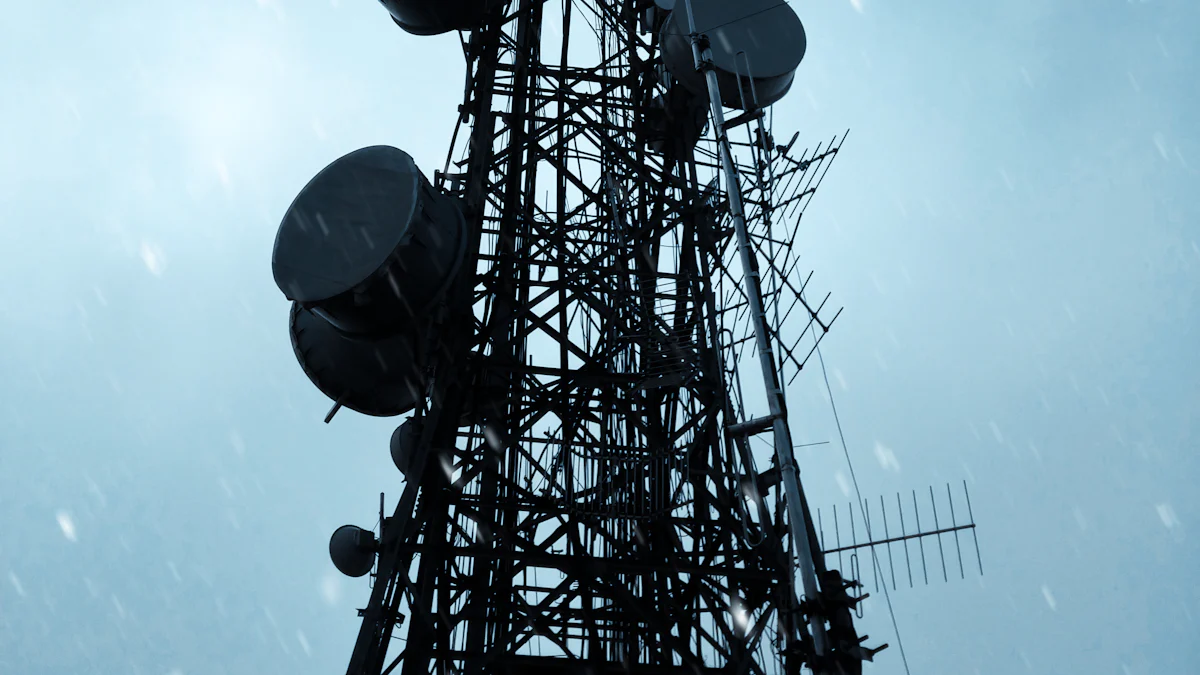
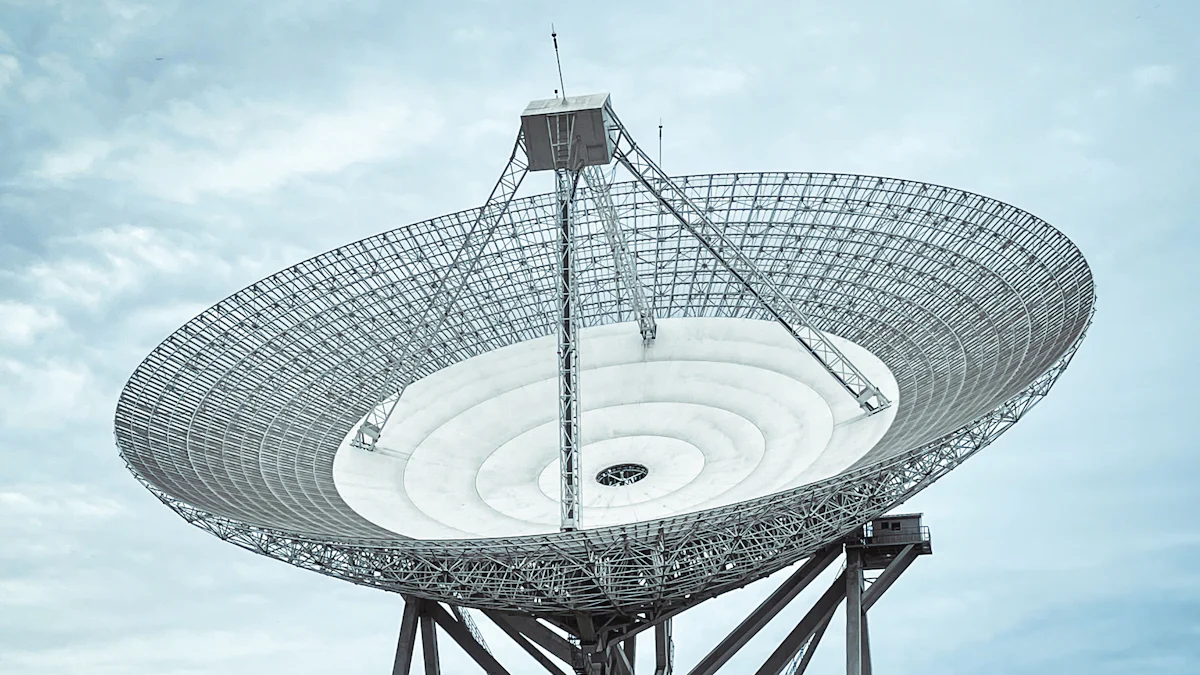 Dipole Antennas
Dipole Antennas Cavity Backed Spiral Antenna
Cavity Backed Spiral Antenna Fig. 1. A sample of cavity-backed spiral antennas
Fig. 1. A sample of cavity-backed spiral antennas STANDARD GAIN HORN ANTENNA
STANDARD GAIN HORN ANTENNA
